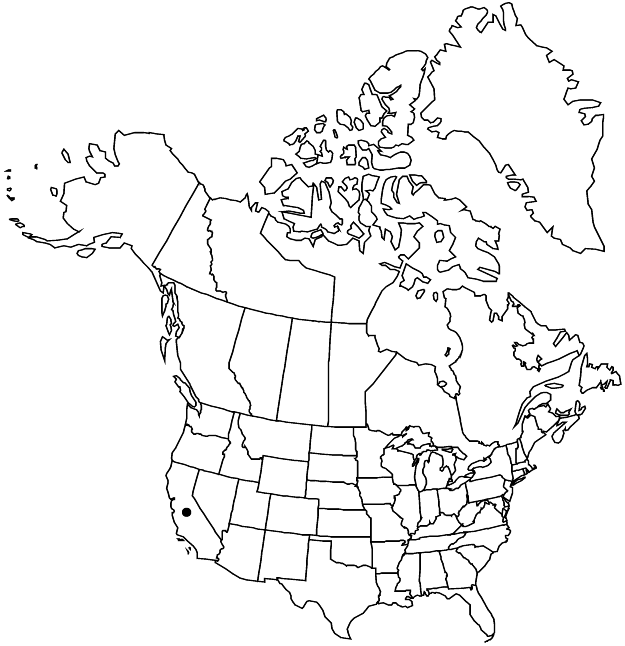Difference between revisions of "Eriogonum angulosum"
Trans. Linn. Soc. London 17: 406, plate 18, fig. 1. 1836.
FNA>Volume Importer |
imported>Volume Importer |
||
| (3 intermediate revisions by one other user not shown) | |||
| Line 8: | Line 8: | ||
}} | }} | ||
|common_names=Angle-stem wild buckwheat | |common_names=Angle-stem wild buckwheat | ||
| + | |special_status={{Treatment/ID/Special_status | ||
| + | |code=E | ||
| + | |label=Endemic | ||
| + | }} | ||
|basionyms= | |basionyms= | ||
|synonyms= | |synonyms= | ||
| Line 34: | Line 38: | ||
-->{{#Taxon: | -->{{#Taxon: | ||
name=Eriogonum angulosum | name=Eriogonum angulosum | ||
| − | |||
|authority=Bentham | |authority=Bentham | ||
|rank=species | |rank=species | ||
| Line 48: | Line 51: | ||
|publication title=Trans. Linn. Soc. London | |publication title=Trans. Linn. Soc. London | ||
|publication year=1836 | |publication year=1836 | ||
| − | |special status= | + | |special status=Endemic |
| − | |source xml=https:// | + | |source xml=https://bitbucket.org/aafc-mbb/fna-data-curation/src/2e0870ddd59836b60bcf96646a41e87ea5a5943a/coarse_grained_fna_xml/V5/V5_855.xml |
|subfamily=Polygonaceae subfam. Eriogonoideae | |subfamily=Polygonaceae subfam. Eriogonoideae | ||
|genus=Eriogonum | |genus=Eriogonum | ||
Latest revision as of 22:14, 5 November 2020
Herbs, erect to spreading, annual, 1–5(–10) dm, tomen-tose to floccose or glabrous, usually grayish. Stems: caudex absent; aerial flowering stems erect, striated, angled, solid, not fistulose, 0.5–1 dm, tomentose to floccose. Leaves basal and cauline; basal: petiole 0.5–3 cm, mostly floccose, blade oblanceolate to oblong-lanceolate, 1–4(–4.5) × (0.2–)0.5–1(–1.3) cm, tomentose abaxially, floccose or glabrate and grayish or greenish adaxially, margins crenulate; cauline sessile, blade lanceolate to oblong, 0.5–2 × 0.3–0.8 cm, similar to basal blade. Inflorescences cymose, open, 5–80 × 10–60 cm; branches striated, angled, sparsely tomentose to glabrate; bracts 3, scalelike, 1–3 × 1–3 mm. Peduncles erect, straight, slender, 1–2 cm, sparsely tomentose to glabrous. Involucres turbinate-campanulate to campanulate, 1.5–2.5(–3) × 1.5–2.5(–3), sparsely puberulent; teeth 5, erect, 0.3–0.6 mm. Flowers 1.5–1.8 mm; perianth white to rose, without a conspicuous rose-purple spot on each outer tepal, minutely glandular-puberulent; tepals dimorphic, those of outer whorl elliptic to obovate, sometimes inflated proximally, those of inner whorl narrowly spatulate; stamens exserted, 2–3 mm; filaments pilose proximally. Achenes light brown to brown, 3-gonous, 1–1.5 mm, glabrous.
Phenology: Flowering year-round.
Habitat: Clayey flats and slopes, mixed grassland, saltbush, and chaparral communities, oak and conifer woodlands
Elevation: 0-800 m
Discussion
The name Eriogonum angulosum has been applied to all of the members of its species complex except E. gossypinum. Since the 1950s, the name consistently has been applied to plants with long, exserted stamens and strongly angled stems of the Inner Coast Ranges (Alameda and Contra Costa counties south), the western foothills of the southern Sierra Nevada (Tulare County south), and the Central Valley (San Joaquin County south). The southern edge of the range is the northern foothills of the Transverse Ranges (Ventura and Los Angeles counties). The species can be common and occasionally abundant but rarely is weedy. A mixed collection (with E. gracillimum) from Barstow, San Bernardino County (K. Brandegee s.n., May 1913, UC), and two sheets of the species from San Diego gathered by Susan Stokes apparently in 1895 (B, SD) are discounted as to location.
In late fruit, the bractlets at the base of the pedicel inside the involucres of Eriogonum angulosum often elongate and broaden into oblanceolate segments that fill the involucre. As a result, the involucre appears to have several rows of teeth. This feature may be seen also in E. viridescens, but typically the involucres there appear to have only two or three rows of teeth. This feature is seen rarely in E. maculatum.
Selected References
None.
